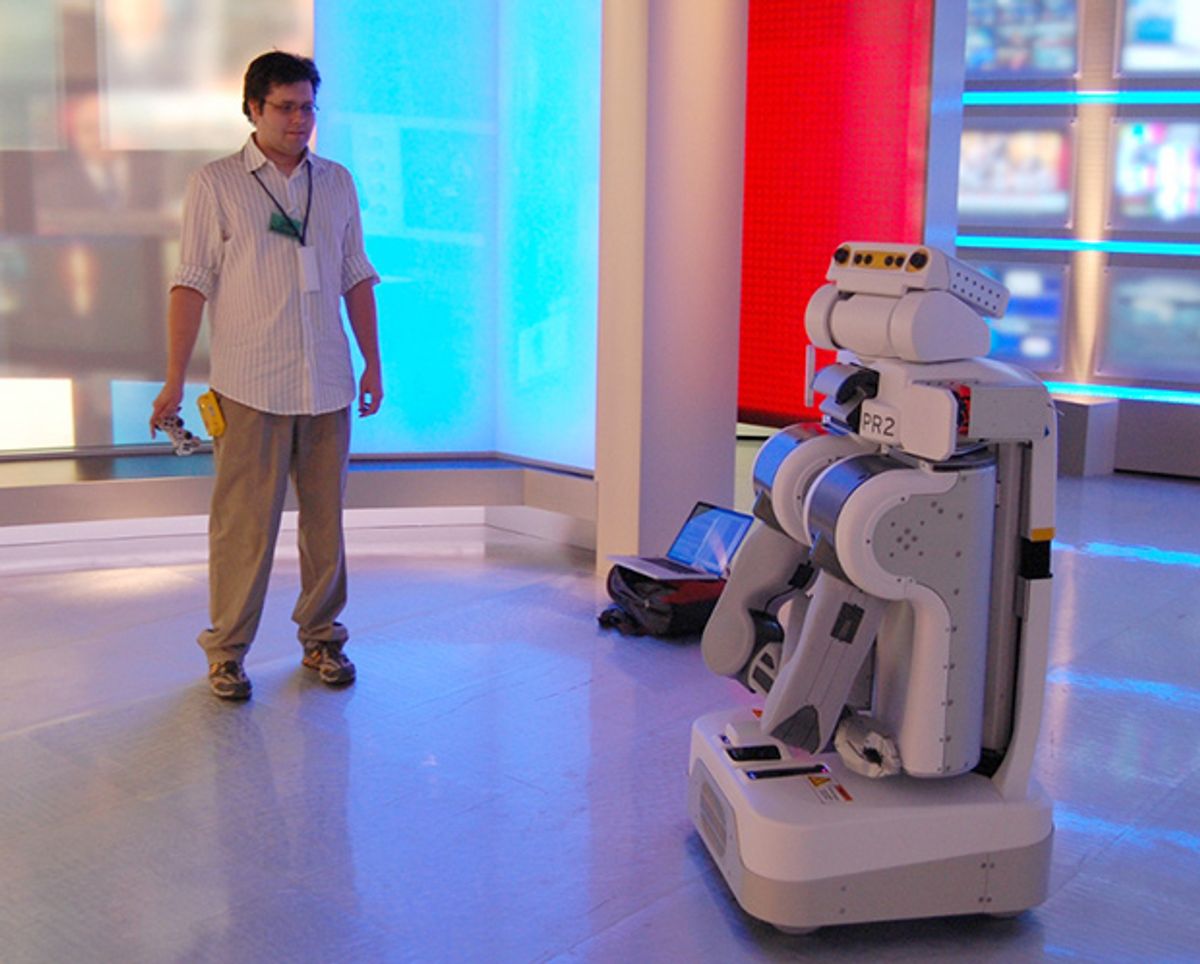Vision is, in theory, a great way for robots to identify objects. It works for us humans, so all of the stuff that we have to deal with regularly tends to have distinguishing visual characteristics like pictures or labels. Robot vision can certainly work as a way to identify objects, but it's not easy, and often requires a ridiculous amount of computing power, whether it's on the robot or off in the cloud somewhere. And even then, if the object you want to find is facing the wrong way or behind something else, you're out of luck. So when you think about it, there are two essential pieces to identifying things, and localization is a big one. Vision is often bad at this.
Another, much easier way of identifying objects is with RFID tags, because you can use a dirt cheap sensor that's super reliable and doesn't give a hoot what orientation an object is or how bad the lighting is or anything else. The other nice thing about RFID tags (besides the fact that they're dirt cheap and printable and will never give you false positives) is that you can detect them from far away, also using them for localization at the same time. If you know what you're doing.
Some researchers at Georgia Tech (including Travis Deyle, who writes his own robotics blog) totally know what they're doing, and have published a paper detailing an efficient, reliable way to perform long-distance localization that's basically (and I'm quoting the press release here) "the classic childhood game of “Hotter/Colder."
The idea of using UHF RFID tags for the localization of objects is not a new one, but a lot of energy has been devoted to trying to do it in very complicated ways, involving "explicitly estimating the tag's post relative to the robot or on a map using Bayesian localization with a data driven sensor model," and assuming "a relatively-uncluttered environment with substantial free space" where "the tag’s orientation and nearby material properties have relatively little variation from place to place."
In other words, these methods do not reliably work in real life.
The Georgia Tech roboticists did away with all of this witchcraft, and instead just outfitted a PR2 with a pair of shoulder-mounted pan/tilt long range UHF RFID antennas and gave it some simple behaviors to follow. First, the robot wanders around an assigned search area, making notes of wherever it picks up signals from RFID tags. Then it goes to the spot where it got the hottest signal from the tag it was looking for, zeroing in on it based on the signal strength that its shoulder antennas are picking up: if the right antenna is getting a stronger signal, the robot yaws right, and vice versa. Here it is in action, inside a mostly real home:
And that's really all there is to it. Using this method, the PR2 can find UHF RFID-tagged objects on top of things, under things, behind things, or inside things, reliably and without performing a comprehensive visual search. The hotter/colder search performs just as well as vastly more complicated systems that rely on having all kinds of modeling data, but it's much simpler and easier to implement and actually works outside of a lab (more or less).
Part of what's exciting about robotics is seeing how complex problems can be solved using solutions that leverage complex technology, but in many ways, it's more exciting to see that a simple, straightforward, logical approach works too. RFID-tagging the world to help robots get into our homes may be slightly less streamlined than doing everything through vision, but it has the advantage of being implementable now, and for some people who may need a little extra help, it looks like it could really work.
"Finding and Navigating to Household Objects with UHF RFID Tags by Optimizing RF Signal Strength," by Travis Deyle, Matthew S. Reynolds, and Charles C. Kemp from Georgia Tech, was presented last week at IROS 2014 in Chicago.
[ Healthcare Robotics Lab ] via [ Georgia Tech ]
Evan Ackerman is a senior editor at IEEE Spectrum. Since 2007, he has written over 6,000 articles on robotics and technology. He has a degree in Martian geology and is excellent at playing bagpipes.



